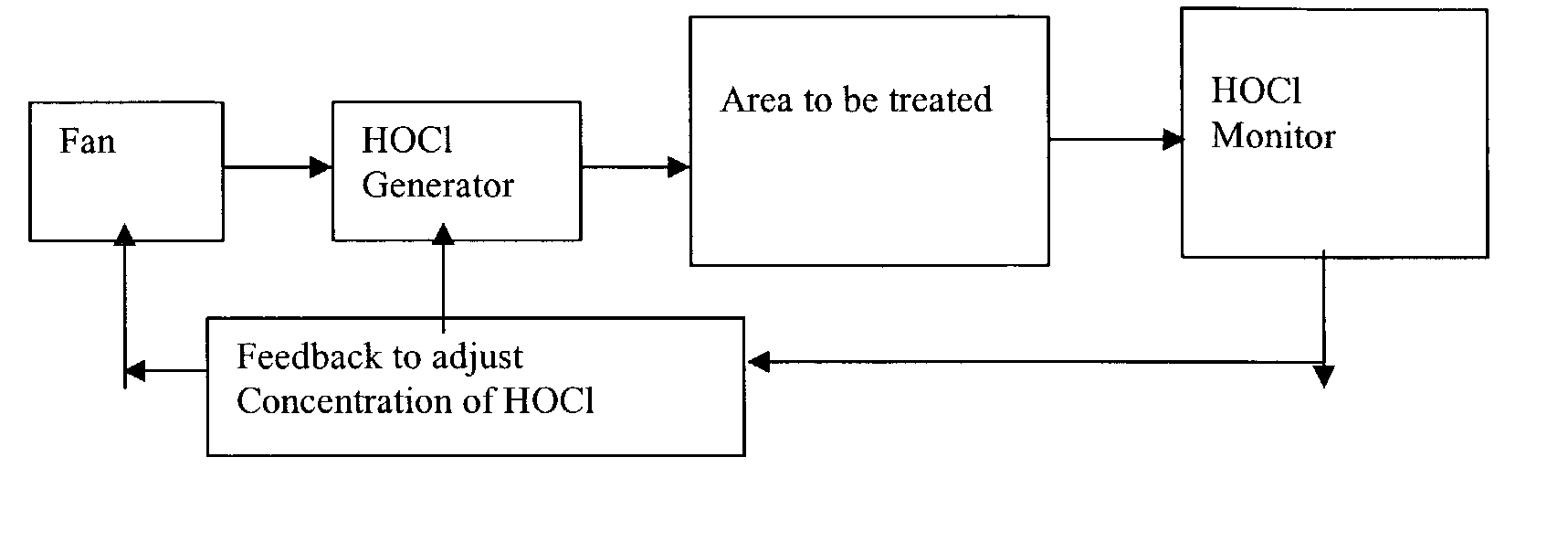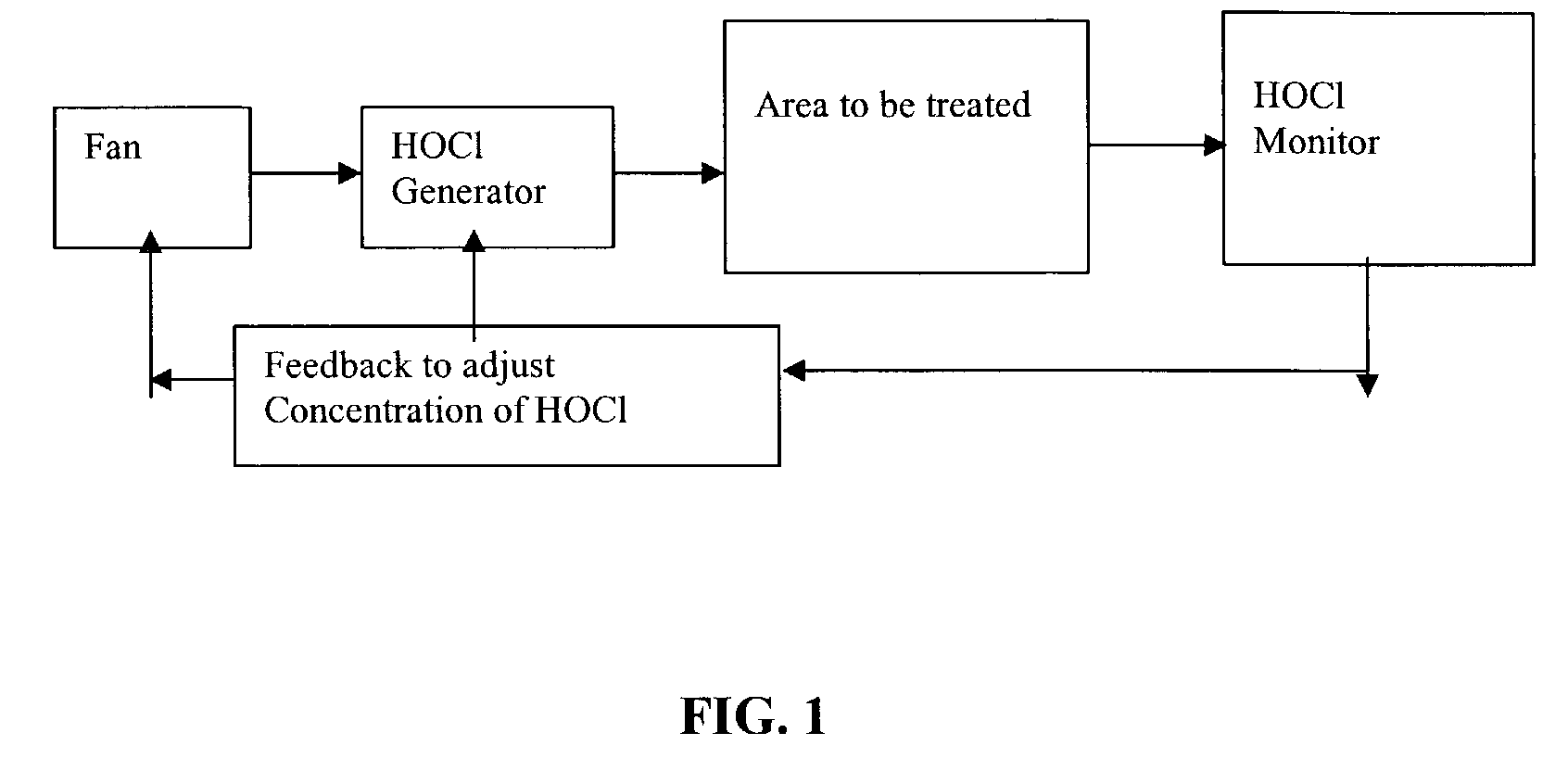Mold remediation system and method
a mold remediation and mold technology, applied in the direction of disinfection, lavatory sanitory, water installations, etc., can solve the problems of serious health effects, serious health problems for mammals, and the recognition of mycotoxins as health hazards
- Summary
- Abstract
- Description
- Claims
- Application Information
AI Technical Summary
Benefits of technology
Problems solved by technology
Method used
Image
Examples
example i
[0064]0.60% sodium hypochlorite in water[0065]0.20 Molar KH2PO4 added and pH adjusted using aqueous H3PO4 or KOH to achieve pH of 6.6.
example ii
[0066]0.060% sodium hypochlorite in water[0067]0.20 Molar KH2PO4 added and pH adjusted using aqueous H3PO4 or KOH to achieve pH of 5.5.
example iii
[0068]0.60% sodium hypochlorite in water[0069]0.94 Molar lactic acid and pH adjusted using aqueous lactic acid or KOH to achieve pH of 5.3.
[0070]All of the solutions of Examples I–III are useful according to the invention for producing hypochlorous acid vapors which are to be distributed to an area that is to be treated for mold and reducing other contaminating bioburden that may include bacteria and their spores, yeast, and viruses. The hypochlorous acid concentration in the air must exceed 3×10−7 grams / cubic centimeter for effective cidal action on mold-contaminated materials.
[0071]For Examples IV and IV below, visual inspection of the untreated control material plated onto an appropriate agar medium revealed numerous fungal colonies that were not inconsistent with members of the Stachybotrys, Penicillium, and Cladosporium genera.
PUM
| Property | Measurement | Unit |
|---|---|---|
| concentration | aaaaa | aaaaa |
| concentration | aaaaa | aaaaa |
| concentration | aaaaa | aaaaa |
Abstract
Description
Claims
Application Information
 Login to View More
Login to View More - R&D
- Intellectual Property
- Life Sciences
- Materials
- Tech Scout
- Unparalleled Data Quality
- Higher Quality Content
- 60% Fewer Hallucinations
Browse by: Latest US Patents, China's latest patents, Technical Efficacy Thesaurus, Application Domain, Technology Topic, Popular Technical Reports.
© 2025 PatSnap. All rights reserved.Legal|Privacy policy|Modern Slavery Act Transparency Statement|Sitemap|About US| Contact US: help@patsnap.com


